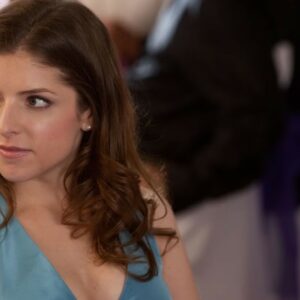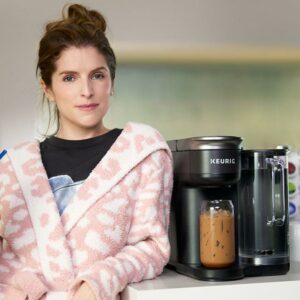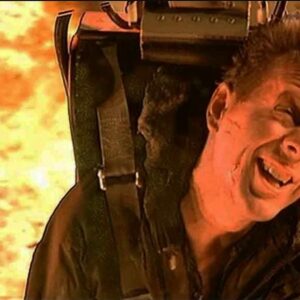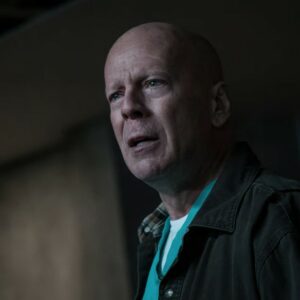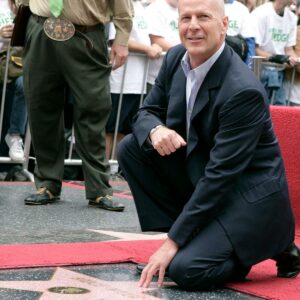Introduction: The Rise of the Ultimate Romantic Lead
When it comes to embodying the quintessential romantic lead, few actors have achieved the kind of universal acclaim that Ryan Gosling enjoys today. His cinematic journey, which started with small, independent films, has evolved into a glittering array of roles that present him as the dream boyfriend—passionate, devoted, yet undeniably flawed. What sets Gosling apart from other Hollywood heartthrobs is his ability to balance charm and vulnerability, which has made him not just a leading man but a symbol of modern romance. This article explores Gosling’s evolution as the ideal boyfriend through key films that have shaped this image, tracing his journey from a passionate lover in The Notebook to the flawed partner in Blue Valentine and beyond.
The Notebook: The Birth of a Heartthrob
Before The Notebook (2004), Ryan Gosling was an emerging talent known more for his indie film work than for being a mainstream romantic lead. That all changed when he took on the role of Noah Calhoun, a working-class man who falls deeply in love with the wealthy and spirited Allie Hamilton, played by Rachel McAdams. Their love story, fraught with class differences, wartime separation, and familial disapproval, struck a chord with audiences worldwide.
Gosling’s portrayal of Noah was more than just swoon-worthy; it was grounded in raw emotion and a fierce, almost relentless, devotion to love. Noah builds Allie’s dream house by hand, writes her letters for a year despite receiving no replies, and never gives up on their love, even when circumstances tear them apart. These acts of unwavering commitment solidified Noah as a paragon of romantic ideals and made Gosling the face of modern cinematic love.
Key Moments: The rain-soaked kiss—an image that has become synonymous with romance itself; the poignant scene where Noah reads to Allie in her old age, showcasing love’s endurance over time; and Noah’s unwavering determination to fulfill his promise to Allie, despite the odds stacked against them.
This film set the tone for Gosling’s future romantic roles, blending passion with deep emotional vulnerability. It became a cultural touchstone, and Gosling, the embodiment of the perfect boyfriend.
Crazy, Stupid, Love: The Reformed Playboy
In Crazy, Stupid, Love (2011), Gosling shifted gears from the emotionally intense Noah to play Jacob Palmer, a suave, impeccably dressed ladies’ man who effortlessly seduces women at bars. The contrast between Noah and Jacob could not be more striking, yet it’s a testament to Gosling’s range as an actor that he plays both characters with such authenticity. Jacob initially appears to be the epitome of shallow charm—a player with little regard for genuine emotional connections. However, his relationship with Hannah (played by Emma Stone) reveals a different side of him.
As Jacob falls for Hannah, the audience witnesses his transformation from a womanizer into someone who genuinely cares about another person. This change is encapsulated in the famous “Dirty Dancing” lift scene, where his vulnerability and playfulness shine through. Gosling’s portrayal of Jacob demonstrates that beneath the surface of a charming playboy lies the potential for real love—a love that requires commitment, emotional intimacy, and the willingness to change.
Key Moments: The moment Jacob lets down his guard and opens up to Hannah; his decision to leave behind his bachelor lifestyle; and the final scene where he fights for his newfound love, proving that even a playboy can become boyfriend material.
La La Land: The Dreamer and Supporter
In La La Land (2016), Gosling took on the role of Sebastian, a jazz musician with dreams of opening his own club. His relationship with Mia (played by Emma Stone) unfolds as a love story not just between two people, but also between two dreamers. Sebastian is not the typical romantic lead—he’s deeply passionate about his music, sometimes to the detriment of his relationship. Yet, his love for Mia is undeniable, even if it comes with the price of their individual ambitions.
What makes Sebastian stand out as a romantic partner is his belief in Mia’s dreams. He encourages her to pursue acting, even when she’s ready to give up. The complexity of their relationship is in its realism—love is not always enough to keep two people together, especially when their dreams pull them in different directions. La La Land presents a bittersweet portrayal of romance, where sometimes the greatest act of love is letting go.
Key Moments: Sebastian pushing Mia to follow her passion for acting, despite the personal cost; the magical scenes of their courtship, full of song and dance, that highlight the joy of falling in love; and the final montage, which reflects what could have been, leaving viewers with a sense of nostalgia for the love that was lost but never forgotten.
Blue Valentine: The Flawed and Raw Partner
If The Notebook represents the idealized version of love, then Blue Valentine (2010) offers a raw, unfiltered look at the darker side of relationships. Gosling’s portrayal of Dean Pereira is far removed from the romantic heroism of Noah Calhoun. Dean is flawed, broken, and struggling to hold together a marriage that is slowly unraveling. His love for Cindy (played by Michelle Williams) is evident, but it is also suffocating, weighed down by their individual traumas and unmet expectations.
What makes Blue Valentine a powerful exploration of love is its refusal to shy away from the messy, painful realities of relationships. Gosling’s Dean is not the perfect boyfriend—in fact, he’s far from it. Yet, his vulnerability, his desperation to make things work, and his deep love for Cindy make him a tragically relatable figure. Blue Valentine strips away the Hollywood gloss to reveal the real work that goes into love, and Gosling’s performance is a testament to his ability to portray both the beauty and the pain of romantic relationships.
Key Moments: Dean’s tender moments in the flashbacks, juxtaposed with the harsh realities of their present-day struggles; his futile attempts to salvage their marriage; and the heartbreaking conclusion, where love, no matter how strong, is not enough to overcome the fractures in their relationship.
The Place Beyond the Pines: The Tragic Protector
In The Place Beyond the Pines (2012), Gosling’s portrayal of Luke Glanton offers a different kind of romantic figure—a tragic protector willing to go to extreme lengths for his family. Luke is a motorcycle stunt rider turned bank robber, driven by a desire to provide for his son and Romina (played by Eva Mendes), the mother of his child. While Luke’s love for Romina is not central to the narrative, his actions are motivated by a deep sense of responsibility and love for his family.
What sets Luke apart from Gosling’s other romantic roles is his moral ambiguity. He’s not the ideal boyfriend or the reformed playboy; he’s a man struggling to do what he believes is right, even when it leads to his downfall. Luke’s tragic end underscores the idea that love can be both redemptive and destructive, and Gosling’s portrayal captures this duality with haunting intensity.
Key Moments: Luke’s attempts to bond with his son, despite the limitations of his circumstances; his increasingly desperate choices to secure a future for his family; and his tragic demise, which leaves a lasting impact on those he leaves behind.
Drive: The Stoic Protector
In Drive (2011), Gosling’s character, known simply as The Driver, is a quiet, enigmatic figure whose actions speak louder than words. Unlike his previous romantic roles, The Driver is not defined by grand gestures of love or emotional vulnerability. Instead, he is a protector, willing to go to extreme lengths to keep Irene (played by Carey Mulligan) and her son safe. His love is expressed through actions, not words, and it’s this stoic intensity that makes him such a compelling romantic figure.
The relationship between The Driver and Irene is marked by unspoken emotions and subtle gestures, creating a sense of longing and restraint. Gosling’s performance is all about nuance—every glance, every movement, carries weight. Drive presents a different kind of romance, one that is built on quiet strength and unyielding loyalty.
Key Moments: The elevator scene, where The Driver’s dual nature as both a protector and a violent enforcer is revealed; his silent yet powerful connection with Irene; and the final moments of the film, where his sacrifice speaks volumes about his love.
Conclusion: The Multifaceted Boyfriend Material
Ryan Gosling’s journey as the ultimate on-screen boyfriend is anything but straightforward. From the passionate and devoted Noah in The Notebook to the flawed and struggling Dean in Blue Valentine, Gosling has portrayed a wide spectrum of romantic partners. What makes his performances so compelling is his ability to capture the complexities of love—its beauty, its pain, and everything in between. Whether he’s playing a reformed playboy, a dreamer, a tragic protector, or a stoic hero, Gosling brings a depth to his characters that elevates them beyond mere romantic archetypes.
Through his films, Ryan Gosling has redefined what it means to be “boyfriend material.” It’s not just about grand romantic gestures or perfect happy endings; it’s about vulnerability, sacrifice, and the willingness to love deeply, even when it’s difficult. As audiences continue to fall for his on-screen personas, Gosling remains a symbol of modern romance—charming, complex, and endlessly captivating.
